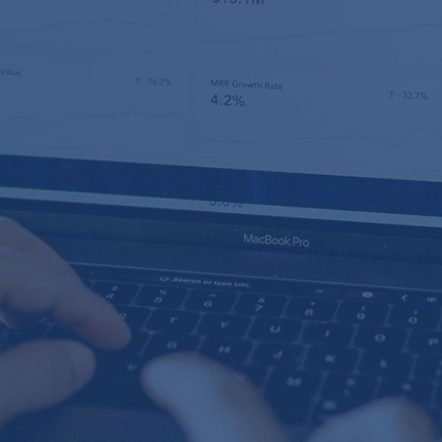Social media has been advancing quickly and introducing a wide scope of new challenges and opportunities for companies to catch audience attention. Constant birth of new social media platforms, expanding adoption and usage of AI, growth of messaging apps and chatbots, evolving “dark social”, to give few examples, have been disrupting the digital world. So, businesses are forced to adapt to survive : learning new approaches & new technologies to effectively understand and manage increasing volume of different data from customer interactions and online activity.
Essential questions to ask yourself to choose the right social listening tool for your company
Within past decade social media became an important business tool, and companies continue to invest into social media tech, such as social media listening, social selling, social media monitoring & community management, social advertising, etc. In response, social media technology industry is maturing rapidly with constant innovation and new solutions, delivering more sophisticated analytical & engagement capabilities, in order to meet clients’ needs. Majority of leading solutions of today go beyond listening and monitoring, they are gradually covering their platforms with content management, social advertising, customer experience management etc. Below you can find the matrix from G2 that gives an overview of the modern solutions available on the market.

As a result of these rapid innovations, making an educated choice about which social technology can best address your needs and justify investment, has become a challenging and time-consuming task, that can provoke a lot of frustration.
In most of the cases, today’s solutions offer a specific set of functionalities that differ in coverage and approach. There are solutions that can provide focus only on social listening for example, but most of them step up and come in combination with tools for engagement, publishing, workflow management, influencer management or reporting functions. It is also a common practice for many companies still to use multiple social media tools across different functional areas and geographies, as they require slightly different approach.
Here under we will cover main steps you have to decide on if you are launching a process of acquiring new solution for your business.
1. The new role of data for informed decision making
Very first step for any business before selecting the provider, is to identify main objectives for the tool’s usage: what do you want to do.
To identify your goals, you can work on answering these questions:
- Do I want only to listen to conversations or do you want to engage with those discussions?
- Do I need to identify crisis signs & measure e-reputation?
- Am I looking for insights to structure my marketing strategy?
- Do I require the tool to help with influencer identification and further management?
- How about proactive engagement with potential customers for further lead generation?
If you are still not clear in your mind what are the main needs for the tool, you can find more about main objectives that can be set up in the following article: http://link to first article
In post COVID-19 times, it is becoming even more critical to correctly set up your needs. Social listening can help to track the impact of crisis on e-health of your brand, monitor long-term effect. Even more you can discover some insights on further improvement to your business/products, or get ideas on how to adapt to new normal.
2. Technical requirements discovery : how to navigate through complex world of social media listening & engagement tools
Once you are clear about what the tool must do for your business, next is to identify the scope of coverage that fits your needs. Depending on how big and complex your organization is, you will need to think of:
- Mix of social media channels : every tool covers/listens to different social media platforms such as blogs, social networks (e.g., Twitter, Facebook, LinkedIn, Instagram, Snapchat, WhatsApp, YouTube, etc.), forums, and others. It is important to carefully estimate where your customers mainly discuss and share their concerns.
- Language coverage : not all of the tools set to understand and process all of the languages, so make sure you carefully answer the question – do you need to listen to what people say in Asia as well as Europe?
- Geographic coverage: social media usage differs in every market: in Europe people tend to use Facebook, but in Russia it will be VKontakte, whereas in China it is WeChat. You need to make sure that tool is able to crawl data from platforms specific to markets where you are present.
- Access & permissions: if there are going to be a lot of people using the tool for different purposes, it’s important to understand whether role-specific dashboards can be created, so that people only have access to the features and data they need to work with.
- Data export: last but not the least in the list of criteria to think of when selecting the solution is data export functionalities. It might not be needed at the beginning of usage, but for sure it is going to come at the latter stage: for example get listening data into other analytical tools, or make link with customer care solutions (e.g. Salesforce etc.). Therefore, you’ll need to be certain that the social listening vendor provides a stable, well documented API.
3. Find the most suitable package that is right for your needs and size of your business
Short listing is to some degree troublesome because of the different methods that providers use to price their solutions. Various pricing models depend on how much the platform is being used.
For example, it can be based on the number of users who use the tool at the same time – it might be interesting for companies with small teams and limited amount of people who will work with the tool; and it can quickly become extremely expensive for big multinational companies that will have big teams in different regions to work on social listening topics.
On another hand, pricing model might depend on the listening volume threshold (volume of search results). It is important to get initial understanding of how well discussed your brand is online, as this will determine whether this pricing model can work for you, or it can quickly become over expensive and not profitable for the company.
Other tools have a flexible pricing model with a free trial to test the ins-and-outs of the product. Normally there are three options: basic, advanced (with additional functionalities etc.), and a plan for agencies (focusing more on analytics features).
This is why it is crucial to understand how you will exploit the tool on a middle / long term period before you make final decision.
4. Can the vendor provide high quality and timely support to help you get the most from the tool?
As already said not all of the companies have mature team to manage the tool by themselves, additionally depending on your needs tool maintenance can quickly become a massive chunk of daily work. Therefore, checking if the supplier offers customer support – is a good point to keep in mind.
- What is the process of onboarding with the tool: is there a set of trainings ? Are they paid or part of the solution ?
- As usual practice teams change, and new members join from time to time – how would the training happen then ?
- Is there dedicated team to help with the initial dashboard set up ?
- What’s the process of troubleshooting as it can be crucial to deliver success: is there support 24/7 (crisis can happen even on the weekend)
Once you are clear on all of the points listed above, you can structure them into clean briefing document for suppliers. This brief will save you time, as it will be used as evaluation grid for each of the suppliers you are going to pick from. As well it should help to structure demo of the product at the later stage: rather than showing all of the functionalities, provider can focus on more relevant blocks for your needs. Very often, following the demo, it will seem that the tool cannot satisfy all your expectations. Therefore, you might want to prioritize your needs, and maybe the tool can satisfy majority of them.
It is also a good practice to request trial before making final decisions. The best way would be to create a simple POC to test all the functionalities of the tool at once : automatic sentiment analysis, data extraction, automatic reports, data quality etc. It can be based on real problem that company is facing at the time or on more generic situation. Don’t hesitate to squeeze the tool, as this will open up weak sides, and will help in evaluation process.
Choosing the right tools for your social listening efforts can help boost your brand awareness, improve your influencer marketing process, and facilitate effective competitor analysis. And always remember to choose the tool that is made for your business needs.
We will close the topic of social listening with the next article that will focus on process of setting up the tool & using right metrics for analysis. Stay tuned!
“During the mission at the European headquarters of the big automotive company, I assisted in the process of selection and putting in place of the social listening tool for the team. In order to understand correctly the needs of the client, I have decrypted and analyzed in depth customer expectations to establish a list of criteria for the call for tenders. I’ve selected a face to face interview approach with main stakeholders to analyze existing processes and collect needs.
Based on defined needs, we could proceed with the benchmark of competitors and evaluate strengths and weaknesses of each of them according to an analysis grid. As a result, the most relevant solution has been selected to address not only short term company strategy but also long-term plans on improving processes.”
Alina NOVIKOVA | Digital Acquisition & Social Media Consultant, Axys Consultants
Published on MyDigitalWeek






